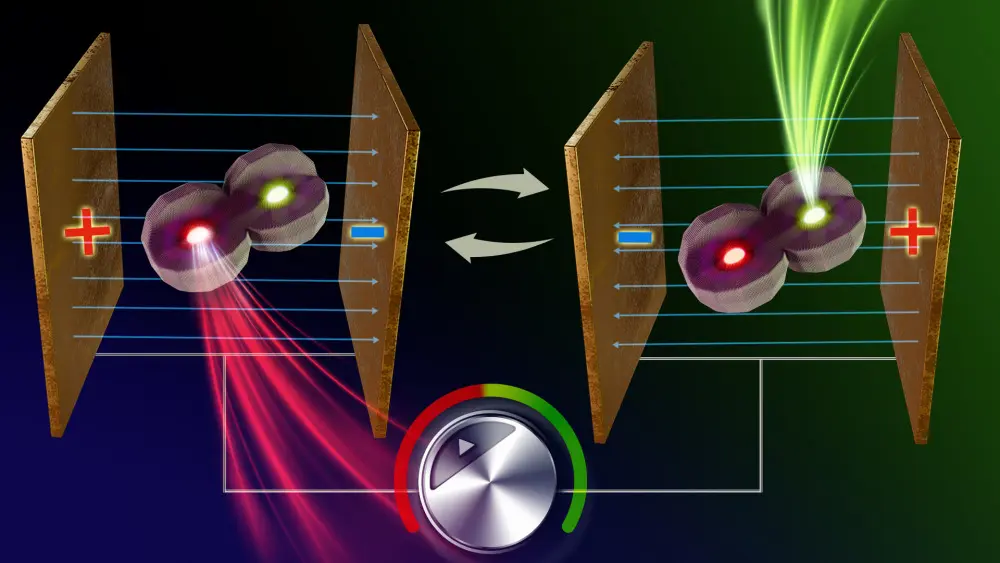Researchers at the Hebrew University of Jerusalem (HU) have achieved a significant breakthrough in color switching for nanocrystals, unlocking exciting possibilities for energy-efficient displays and tunable light sources for various technologies. The discovery, published in Nature Materials, also holds promise for sensitive sensors and advancements in quantum communication technologies.

The basis of many modern technologies, from lighting and displays to optical fiber communication networks, relies on colored light and its tunability. Nanocrystals, which offer color tunability, have found widespread use in various technologies due to their easy fabrication and manipulation using wet chemistry, leading to high-quality commercial displays with excellent color quality and energy-saving characteristics.
However, achieving dynamic color switching between different colors in nanocrystals has been a challenge until now. Typically, different nanocrystals were required for each specific color, limiting their versatility. Although color tuning of single colloidal nanocrystals, which behave as “artificial atoms,” has been explored, actively changing colors without losing brightness has proven difficult.
The team at HU’s Institute of Chemistry and the Center for Nanoscience and Nanotechnology, led by professor Uri Banin, tackled this challenge by creating an innovative system called an artificial molecule. This molecule comprises two coupled semiconductor nanocrystals that emit light in different colors. By subjecting this molecule to an electric field, they achieved fast and instantaneous color switching.

This breakthrough opens doors to developing sensitive technologies for detecting and measuring electric fields. It also enables new display designs where each pixel can be individually controlled to produce different colors, simplifying the standard RGB display design to a smaller basis of pixels, which has the potential to increase the resolution and energy savings of future commercial displays. This advancement in electric field induced color switching has immense potential for transforming device customization and field sensing, paving the way for exciting future innovations.
Reference
Ossia, Y., Levi, A., Panfil, Y.E. et al. Electric-field-induced colour switching in colloidal quantum dot molecules at room temperature. Nat. Mater. (2023). https://doi.org/10.1038/s41563-023-01606-0

